Lithium is Good, But What Are Some Better Battery Alternatives?


(Image: myenergi/Unsplash)
This article is part of our series on responsible mining solutions. The push for clean energy is fueled by a growing demand for minerals, but conventional mining has a track record of harmful social and environmental impacts. Lithium-ion battery alternatives are another potential solution to that problem.
Lithium-ion batteries are currently the best combination of price, performance and sustainability on the clean energy battery market. Exploring those attributes separately, lithium-ion batteries are not the cheapest, nor the highest performing in all battery categories, or the most sustainable option. They are acceptable in all three categories, but there is room for improvement.
“There’s a strong need to diversify our battery chemistries,” said Magda Titirici, the chair of sustainable energy materials at Imperial College London. “There’s no one solution. There’s one type of battery if you need high power. There’s another type if you need long duration. The needs for batteries are very diverse.”
Lithium extraction is a water-intensive process that usually happens in arid regions. As such, communities in Argentina, Chile, Bolivia, and Serbia have all put up fights to prevent international mining companies from entering their territories.
Let’s explore the other options, starting with a battery alternative that uses an easily sourced and readily available mineral that does not have extraction complications like lithium.
Sodium-ion batteries
At this point, sodium-ion batteries represent the most promising alternative to lithium batteries. JAC, a Chinese automaker, already has electric vehicle (EV) models on the market powered by sodium-ion batteries.
Also in China, a 10-megawatt-hour sodium-ion energy storage station became operational earlier this year, with plans to expand to 100 megawatt hours. That could meet the electricity needs of 35,000 residents and avoid 50,000 tons of carbon dioxide emissions.
In terms of performance, lithium batteries pack a slightly stronger punch. But sodium is much more abundant in the Earth’s crust than lithium, and it can be extracted from seawater at a low cost, providing a more sustainable alternative.
“The advantage of sodium is the availability of the materials,” Titirici said. “And the choice of cathodes is based on very abundant materials with no critical metals.”
In sodium-ion batteries, there is also no threat of thermal runaway, meaning a safer battery that is not prone to fires, unlike lithium-ion batteries.
If manufactured on a similar scale, sodium-ion batteries would be cheaper to produce than lithium-ion batteries. Right now, however, sodium-ion batteries are still more expensive.
“Despite the availability of the materials, there is no market for sodium, so cost is a barrier,” Titirici said.
Environmental and social impact: Sodium is far more abundant than lithium and much more easily extracted. There are huge salt deposits around the world, often in less fragile environments than where lithium is found. Also, sodium-ion batteries do not require mining cobalt.
Zinc-air batteries
Zinc-air batteries are safer than lithium and have a higher energy density meaning they can hold more energy for longer. But a current challenge is crystalline masses forming on the zinc part of the battery that hinder the battery’s performance.
While they can store energy better than a lithium battery, the amount of power they can produce is lower.
“Zinc batteries are safer and have high theoretical energy density,” said Muhammad Azhar, engineering lecturer at Edith Cowan University. “And recycling zinc batteries seems easier than lithium, but both are in the developmental stage.”
Zinc is cheaper than lithium. Over the past five years, battery-grade zinc cost between $1.85 and $4.40 per kilogram. Battery-grade lithium, on the other hand, fluctuated between $5.80 and $80 per kilogram.
The most promising applications of zinc batteries lie in energy storage and long-term, low-energy applications like watches or hearing aid batteries.
Environmental and social impact: Zinc is far more abundant than lithium and much easier to extract. While there are hazardous impacts of mining zinc, it is generally a friendlier process than extracting lithium. Zinc deposits are more plentiful and are found in less environmentally sensitive regions than lithium.
Nickel-zinc batteries
There’s nothing new about nickel-zinc batteries. Invented by Thomas Edison in 1901, the battery didn’t gain the same traction as some of Edison’s other inventions like the record player, movie camera or light bulb.
Its ability to discharge high amounts of power quickly makes it ideal for mission-critical applications, like backup power for data centers or telecommunications networks. While nickel-zinc batteries don’t match the performance output of lithium batteries, they are very safe and cheaper to produce.
Environmental and social impact: Nickel and zinc are much more available than lithium. Of course, legacy mining issues can present problems in the extraction of either, but overall, they are more sustainable options compared to lithium.
Multivalent batteries
Aluminum, magnesium, calcium and zinc are metals that can form ions that carry multiple positive or negative electric charges. Batteries store and release energy through the movement of these ions.
In a lithium-ion battery, one lithium-ion molecule carries one charge of electricity. In multivalent batteries, each ion carries multiple charges of electricity. That doesn’t mean more power, but that means they could store more energy and hold their charges longer than lithium batteries.
“It is very early days, so it’s unlikely that there is interest from any companies or customers in multivalent,” Titirici said. “They could be very interesting if we could make them work, but as I said, it’s early days.”
Environmental and social impact: Extracting and processing aluminum, magnesium and zinc are not light processes. Each can carry significant energy use, land disturbance and social impact challenges. Calcium extraction generally has a lower environmental impact. One advantage that aluminum has, however, is that it is very easily recycled. Using recycled aluminum in multivalent batteries could offer a sustainable solution.
Redox-flow batteries
“Redox flow batteries are based on two massive tanks where electrolytes are flowing, Titirici said. “We won't see those in EVs, but definitely for stationary storage they are a viable solution.”
These battery systems used the rare metal vanadium in the past, but researchers are exploring other options that require less expensive, easier-to-obtain components like iron.
“Vanadium is very expensive and a critical metal, so people are looking at other alternatives to vanadium,” Titirici said.
Social and environmental impact: Redox flow batteries are an improvement over fossil fuel storage systems in terms of carbon emissions, but vanadium is not the friendliest mineral to extract. Iron, while cheaper, is a carbon-intensive product. These options, however, offer significant environmental improvements over fossil fuel-based storage systems.
Solid-state batteries
“The solid-state battery works exactly like a lithium-ion battery, but in a lithium-ion battery, you normally have a liquid electrolyte that shutters lithium ions between anode and cathode,” Titirici said. Anodes and cathodes are the negative and positive conductors in a battery, respectively, that allow for charging and discharging. The electrolyte is the substance the ions move through as a part of that process.
In solid-state batteries, that electrolyte is solid. This allows for a greater energy density than regular lithium-ion batteries which means, for example, that EVs with solid-state batteries could travel further distances between charges.
Solid-state batteries also have a higher cycle life, are more easily recycled and safer, and should be a more sustainable option.
What’s the catch? They’re expensive to produce, but as supply chains and processes become established, those costs should come down.
“They will be quite expensive,” Titirici said, “But I think we will see commercial lithium solid-state batteries on the market.”
Environmental and social impact: Lithium is still used, but solid-state batteries can avoid critical minerals like cobalt and nickel. Earlier this year, researchers developed the design principles for the world’s first sodium solid-state battery. It’s early, but this could be a major breakthrough in batteries combining performance, safety and sustainability.
Lithium-sulfur batteries
Quick, high energy output is what lithium-sulfur batteries offer. This is not practical for the majority of applications, but there are cases where it is the desired result.
“Lithium-sulfur batteries can be commercialized for very niche applications like drones or military or things like that,” Titirici said. “They are going to be very expensive because it's a very niche market, but we will see lithium-sulfur commercial products.”
There are also sodium-sulfur batteries, but these are a bit behind lithium-sulfur in terms of market readiness.
Environmental and social impacts: These batteries still require lithium, but they offer lower carbon footprints than current fossil fuel-based uses. And sulfur is a much lower-impact mineral than lithium-ion components like cobalt and nickel.
Organic batteries
“Organic materials are weak, and they can't withstand very high voltages that are needed in a battery,” Titirici said. “They have very low energy densities in general.”
That said, organic batteries can be used in low energy density applications like chips or sensors.
Just because they are organic, does not mean they are green and environmentally friendly. They use carbon compounds that can be toxic but can come from renewable sources that do not require harmful mining practices.
Environmental and social impact: These batteries offer one of the lowest environmental and social impacts of all batteries. While toxicity can be a concern, organic batteries are less harmful to the environment and humans than other battery compositions, overall. This is the most sustainable option that we explored.
Cleaner batteries, cleaner future
While lithium-ion may be the track star for now, using alternatives where possible can complement its efforts and lower the environmental and social impact that lithium-ion batteries carry. As research efforts continue, we should see more commercial products using the battery chemistries mentioned above, and more sustainable chemistries emerging in laboratories.
Sustainability Reporting: How Private Companies Can Leapfrog Their Listed Competitors


(Image: Pawel Chu/Unsplash)
Starting in January 2026, thousands of private companies operating in the European Union will be required to report on their sustainability efforts. For many, it will be their first ever report. It’s tempting to see it as an unnecessary burden that’s still a year down the line. But starting now is not only critical for effective compliance, it also ensures there’s time to craft a clear and compelling story of social and environment progress that makes the company stand out.
The EU’s Corporate Sustainability Reporting Directive came into force in January this year. In the first phase, large, listed companies have to report on their performance the year prior starting in 2025. Despite being used to the rigors of mandatory reporting, many find it to be a challenging and time-consuming process.
Almost six in 10 companies struggled to get their hands on the data they need, especially when reporting on complex value chains. Short deadlines, lack of expertise and limited resources add to the headache.
Against that backdrop, private companies that have to report on their progress for the first time at the start of 2026 have a lot of catching up to do. The immediate reaction may be for companies to bury their head in the sand, but that means they miss out on the benefits at every stage of the reporting process, from business preparation to publication, and make compliance more challenging.
The business benefits of reporting
Focused on creating a thriving business to pass on to future generations, private and family-owned organizations are more likely than their publicly listed cousins to take a longer-term view. This leads many to make great strides to reduce their environmental harm and increase positive social impact. But they pass up the opportunity to shout about it.
Almost three-quarters of EU employees say their job is more fulfilling if they can have an impact on social and environmental issues, and just over half suggest they would not work for a company with strong social and environmental commitments. Similarly, 78 percent of United States employees want to work for organizations with values that align with their own. This makes sustainability a compelling recruitment tool.
Once employed, 70 percent of EU employees indicate they would be more loyal to company that enables them to contribute to important issues. In the U.S., 70 percent of those under 30 would take a meaningful job over a higher salary. Even in older age groups in the United Kingdom, around one-quarter of employees would consider "climate quitting" if their company was not reducing its environmental impact quickly enough.
A transparent and engaging sustainability narrative can be a strong differentiator, with the majority of U.S. consumers indicating that social and environmental concerns are a factor in their purchasing decisions.
As reporting requirements increase, companies will expect their partners to provide information about their sustainability strategy and progress. Companies that can supply that data quickly will be easier to do business with — ultimately becoming partners of choice. One-third of U.S. businesses already report losing out to competitors due to inadequate sustainability strategies.
Unburdened until now by reporting requirements, many privately-owned organizations are more flexible and entrepreneurial with lighter-touch policies and processes. Done well, the more robust governance and impact assessment that comes with mandatory reporting enables companies to strengthen their risk management and opportunity assessment — helping protect the business and identify new avenues for growth. The assessment provides a holistic view of the business and helps to direct activity and investment to where it will reap business benefits while reducing negative impacts.
Mandatory reporting necessitates robust policies and procedures. While it may feel like additional red tape, it’s an invaluable way to strengthen the long-term viability of the business.
Playing catch-up on sustainability reporting
Preparing for the Corporate Sustainability Reporting Directive (CSRD) can seem daunting, especially given publicly-listed organizations with large reporting teams and years of reporting experience found it a challenge. But the entrepreneurial culture in many private organizations allows them to catch up and potentially even gain an advantage over those that are reporting in the first wave. Not least because they can learn from the experience of around 12,000 early adopters. The key is to approach it systematically.
A good sustainability strategy always starts with a review of the company’s sustainability universe. This is an integral part of the CSRD process — the double materiality assessment. It requires companies to look at their impact on people and the planet, as well as where environmental, social and governance topics might create financial risks and opportunities for the company. The aim is to identify the issues of greatest importance that should form the backbone of the company’s strategy and determine the topics it needs to report on.
The European Sustainability Reporting Standards, which accompany the CSRD, list dozens of data points relevant to each sustainability topic — some mandatory, some set to phase in over coming years and some optional. Companies new to reporting may decide to stick to the mandatory data points only, unless there is a particularly strong appetite for transparency.
A gap analysis then helps to identify what data the company already has to hand and put in place plans for collecting what’s missing. Data requirements are far reaching, needing support from across the business. Clearly communicating the business benefits of the CSRD to all employees eases data collection. Without it, employees can view the process as a distraction from the day job.
Bringing the story to life
Faced with so much data and detailed reporting requirements, it’s easy for the company’s core message to get buried — and with it, the benefits of telling employees and customers about its sustainability achievements.
It may seem like extra work, but it is worth taking time to step back and consider whether there’s need for a summary or supplementary report that talks to stakeholders other than regulators and is more accessible while avoiding greenwashing. Alternatively, it is worth considering how the company will update stakeholders through its website, marketing activities and internal communications.
Once companies understand their sustainability universe, what data they have available, what they need to collect and how they want to communicate their story, they are ready to reap the rewards of CSRD compliance.
After 40 Years, New Carbon Sequestration Study Confirms the Value of Trees


Image: Jakub Sejkora/Unsplash
Supersized corporate tree-planting pledges can easily grab the media spotlight, only to wilt away when the program fails to meet expectations. To ensure success, businesses need to invest in careful planning, implantation and follow-up. The additional expense is well worth the effort, as demonstrated by a new model for assessing the carbon sequestration capability of trees and other plants.
For carbon sequestration, trees and plants are 31 percent more important than previously thought
When scientists estimate the ability of plants to sequester carbon on a global scale, many of them rely on a model initially developed 40 years ago.
Under the 1980s model, the carbon sequestration attributed to plants stands at 120 petagrams globally. For some perspective on the size of that figure, consider that each petagram represents the amount of carbon dioxide emitted from about 238 million gas-powered passenger cars.
In contrast, the new carbon sequestration model yields a result of 157 petagrams, or 31 percent more carbon sequestered by trees and other plants.
The new model was developed by a team of researchers from Cornell University, supported by the Oak Ridge National Laboratory of the U.S. Department of Energy. “Understanding how much carbon can be stored in land ecosystems, especially in forests with their large accumulations of biomass in wood, is essential to making predictions of future climate change,” Oak Ridge emphasized in a news update on the findings.
Oak Ridge says the model presents not just a larger estimate of carbon sequestration, but a more accurate estimate as well. It focuses on an easily trackable compound called carbonyl sulfide as an alternative to the more challenging task of measuring carbon directly. The research team also deployed information from the global LeafWeb photosynthesis database, a shared service established by Oak Ridge.
Another improvement involves the use of precise data from environmental monitoring towers on the ground. In contrast, the 1980s model deploys satellite observations from above, where clouds can interfere with information-gathering.
A renewed emphasis on rainforest protection
Because cloud interference is especially common in tropical regions, the use of ground-based monitoring equipment has especially significant implications for an improved understanding of the carbon sequestration potential of rainforests.
“Pan-tropical rainforests accounted for the biggest difference between previous estimates and the new figures, a finding that was corroborated by ground measurements,” Oak Ridge reported. “The discovery suggests that rainforests are a more important natural carbon sink than previously estimated using satellite data.”
That finding supports the Rainforest Alliance and other conservation organizations that have drawn the connection between tropical forest loss and global warming. The Rainforest Alliance works with local communities in tropical regions, and both large and small businesses, in collaborative efforts to implement sustainable forest conservation strategies.
Letting nature take its course
The emphasis on collaboration and stakeholder engagement can help corporate tree-planting programs avoid the reputational tarnish that can result when local communities are not part of the planning process.
Loss of biodiversity is another factor that should make business leaders wary. The World Economic Forum, for example, faced criticism that its “One Trillion Trees” program lends support to commercial forest management practices and fails to protect natural habitats.
In terms of both biodiversity protection and carbon sequestration, business leaders may find that a more economical and beneficial alternative is to simply preserve the land, and let nature take care of itself.
In a newly published study in Nature, a multinational research team makes a compelling case for investing in natural reforestation, rather than focusing on planting trees by hand.
“Tree planting in degraded landscapes is a popular but costly forest restoration method that often results in less biodiverse forests when compared to natural regeneration techniques under similar conditions,” the researchers observe. “Using manual techniques in degraded landscapes can be expensive. It can also be less effective in terms of native biodiversity recovery and keeping water systems functioning well,” they added, citing studies that show a 56 percent higher rate of biodiversity in natural regeneration projects compared to manual tree-planting.
Within tropical regions, the researchers estimate that suitable sites for natural reforestation cover a total of 215 million hectares, an area about the size of Mexico. (One hectare is about the size of 2.5 football fields.)
The study included tropical regions in South and Central America, Southeast Asia, Malaysia, India, and Africa. Among these regions, the researchers recommend that reforestation efforts prioritize Brazil, Indonesia, China, Mexico and Colombia, a group of nations that collectively account for 52 percent of the estimated potential for carbon sequestration.
Trust, but verify
The cost savings of natural reforestation is an attractive factor. The researchers cite expenses of $105 and up per hectare for manual planting in tropical regions, compared to just $12 and up for natural reforestation.
Still, before businesses rush pell-mell into natural reforestation, the researchers indicate that simply setting aside land for conservation does not necessarily result in a satisfactory outcome.
The figure of 215 million hectares represents degraded sites that meet certain conditions supporting natural regeneration, including the availability of surrounding or nearby forests and the organic carbon content of the soil. Accordingly, the researchers indicate that areas where the land has been severely and extensively degraded are not suitable candidates for natural reforestation.
Overall, the science provides additional support to businesses that invest in natural carbon sequestration efforts. Corporate initiatives can make a significant contribution when they are guided by a flexible, knowledge-based approach that engages local stakeholders, takes advantage of natural reforestation where available, and incorporates manual tree planting where necessary.
Advocates in Pajaro Focus on Community Building for Disaster Recovery
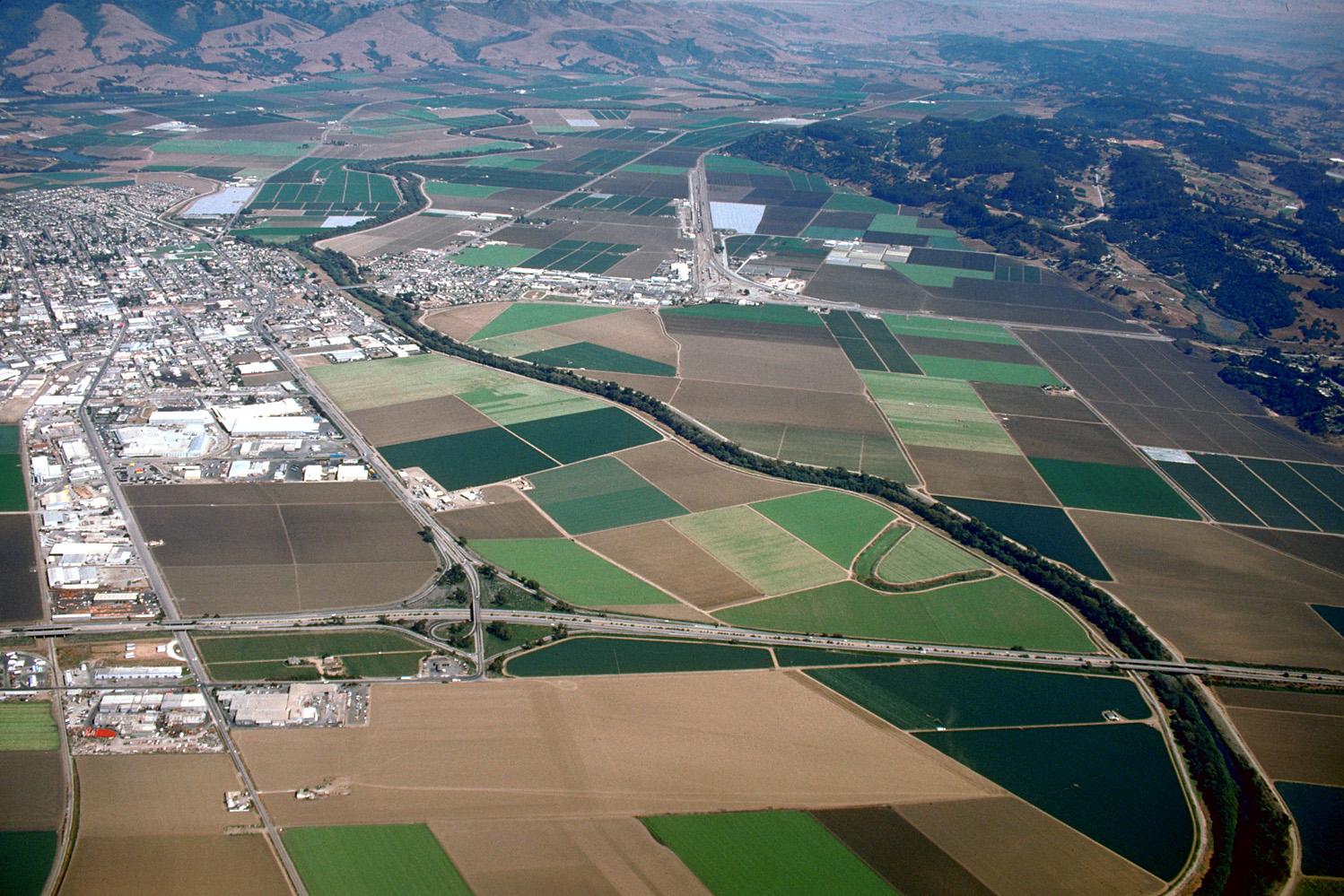
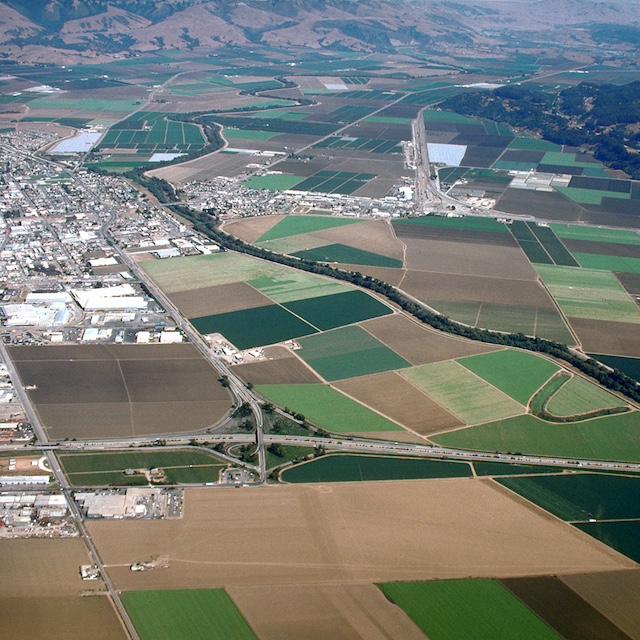
The Pajaro River cuts between Santa Cruz County (left) and Monterey County (right) past Pajaro and Watsonville before emptying into the Pacific Ocean. (Image: Robert Campbell/Wikimedia Commons)
Following last year’s flooding, 79 percent of Pajaro, California, residents experienced temporary displacement, and 16 percent experienced permanent displacement. Yet, there was a silver lining amid the devastation, and it’s all thanks to community building. The crisis brought neighbors together, empowering the community and inspiring advocacy.
Building a sense of community
In addition to being displaced, half of the residents had significant damage to their homes, and 55 of them experienced other types of property loss or damage, Paulina Moreno, director of special projects at the Pajaro Disaster Long-Term Recovery Alliance, told TriplePundit. She shared these statistics from a community survey that was conducted along with the Coalition for Humane Immigrant Rights of Los Angeles (CHIRLA), a member of the Climate Justice Collaborative.
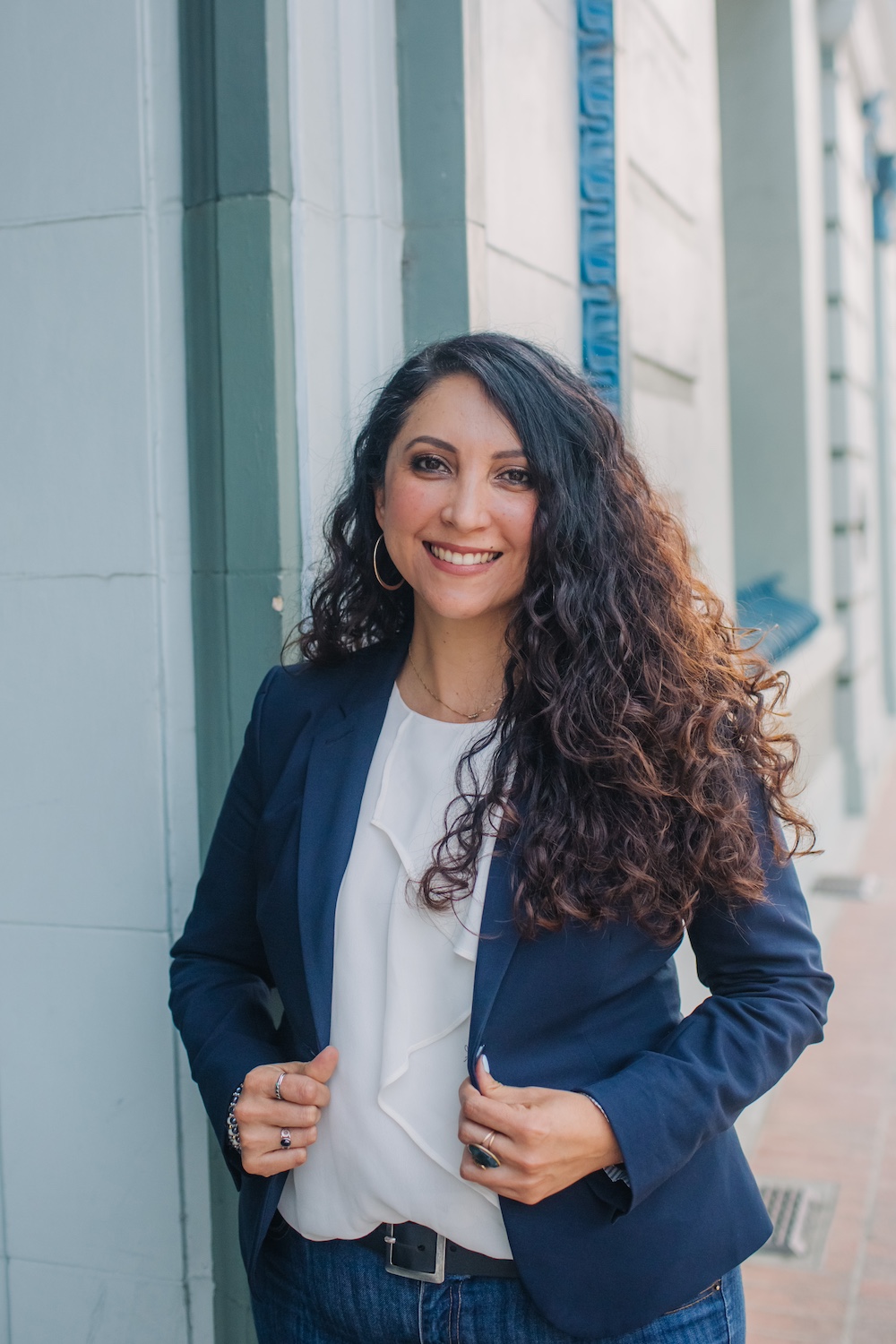
“These residents didn't know each other. They were neighbors, and they lived next to each other, and they didn't know each other,” MariaElena De La Garza, executive director of the Pajaro Disaster Long-Term Recovery Alliance, said. “Now, there is a sense of community that didn't exist before. With that foundation of community relationship, neighbor to neighbor, it has now opened the doors to ensure that we are more prepared for the next emergency.”
The sense of togetherness was fostered by community building and advocacy carried out by the alliance, a coalition of agencies including the Salud Para la Gente health clinic, the Second Harvest food bank, the Pajaro Valley Unified School District, Pajaro Valley Student Assistance and more. It came together after a levee broke and the Pajaro River flooded the town.
Bringing neighbors together benefits disaster recovery
Now, the same neighbors who didn’t know each other before the disaster come together every Friday, forming a resident subcommittee focused on grassroots organizing. They pinpoint and develop leaders from the community, build connections, guide the town from rebuilding to prospering, and prepare for the next disaster, De La Garza said.
“The community resident subcommittee, early on, identified three areas of priorities for themselves,” she said. “One is economic relief … Number two is a need for a communication system that works … and a need for mental health.”
The organizations have made progress on some of these issues. Though the financial assistance is yet to be distributed, the Pajaro Disaster Long-Term Recovery Alliance and CHIRLA advocated for $10 million of the $20 million dollar recovery package from the state of California to be distributed directly to community members and businesses, which 3p previously covered.
“There's still ongoing advocacy to be done,” Vladimir Carrasco, the deputy director of external affairs at CHIRLA, told 3p regarding the funds that have yet to be dispersed. And because the Storm Assistance for Immigrants recovery program is a one-time allotment, further advocacy will be necessary with subsequent disasters.
As for improved communication, a digital display board capable of relaying emergency information is set to be installed in the middle of town. “That’s exactly what they asked for,” De La Garza said. “Partners like the U.S. Army Corps of Engineers are working with us to develop and support a communications system beyond the alert … coming in and directly speaking to the Alliance and to the communities that we represent.”
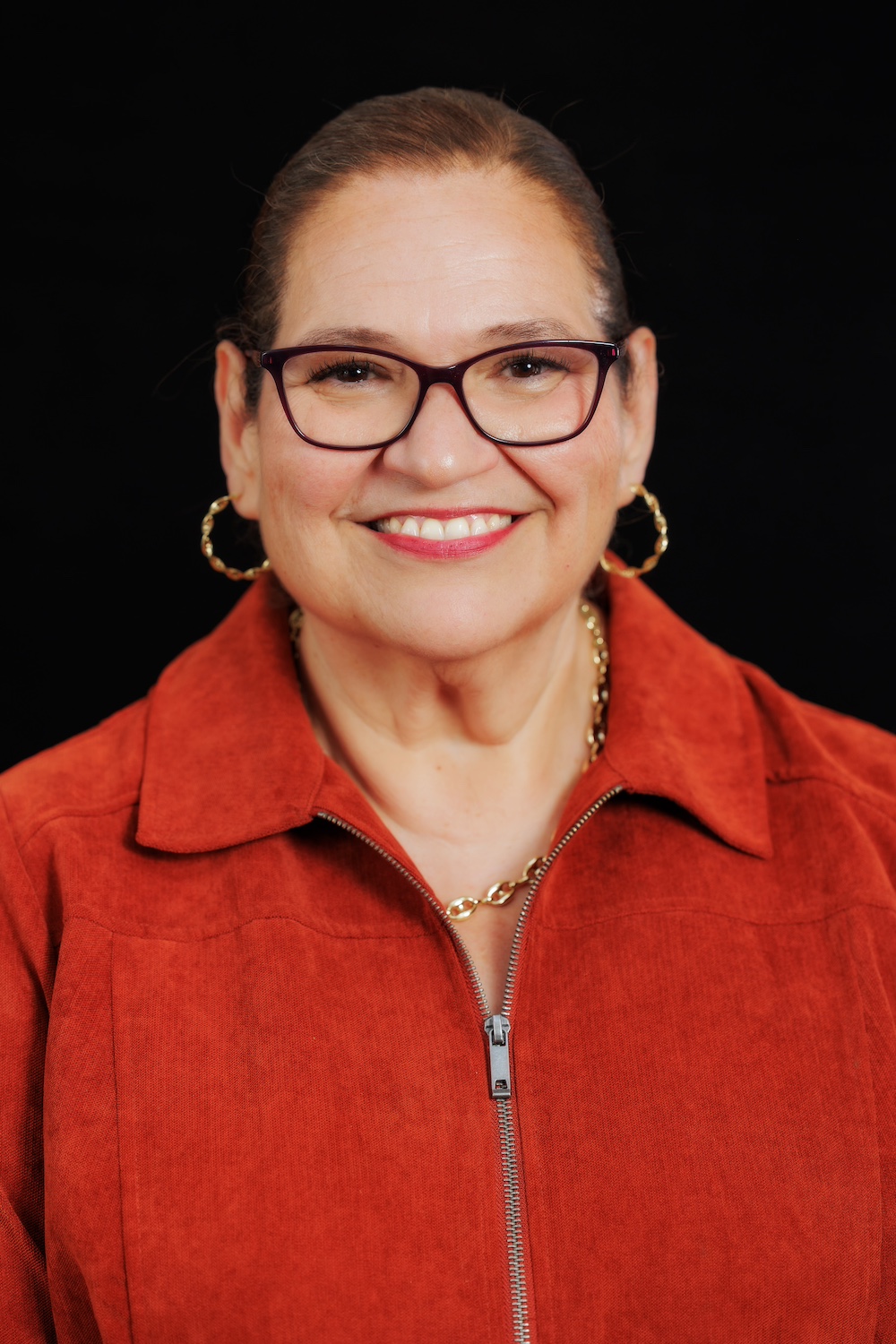
Subcommittees are the key to community leadership
The Pajaro Disaster Long-Term Recovery Alliance acts as an umbrella structure with multiple subcommittees operating under it, De La Garza said. In addition to the community resident subcommittee, there is a business subcommittee made up of 50 local businesses, a land use subcommittee that identifies development opportunities for the town, and a Mixteco subcommittee that focuses on organizing and building trust within the Indigenous community that immigrated from Mexico.
The voices of leadership that emerged from the subcommittees are a huge win, De La Garza said. Instead of agency-led advocacy efforts, it’s the community leaders who picked up the torch.
Blurring county lines
“This community has been systemically left out, both by government and by real estate interests and foreign, powerful, rich farmers,” CHIRLA’s Carrasco said. “But Pajaro now, because of all this history, lies in an unincorporated area on the border of two very large counties: Santa Cruz County and Monterey County. That means they don't have local government representation. Now it's a lot easier, decade after decade, for this town to be forsaken and ignored.”
That also complicated recovery efforts. It’s a struggle for the two counties to work together, and when it comes to disaster preparedness, a regional approach is needed, De La Garza said. To be effective, organizations like the alliance need to blur county lines in their work.
“Government agencies are not necessarily trusted by the vulnerable communities that are impacted by the emergency,” she said. So identifying trusted partners who can operate within that framework is all the more important.
Building trust
The alliance’s Moreno relates something her mom often said during her childhood to her work: "Primero, en las casa."
She meant, “Whatever you want to change in the world, make sure that it's changed within your house,” Moreno said. For the alliance, “It was about strengthening our infrastructure to be able to serve the Indigenous language community, so we started hiring people from the community.”
Doing so helped build the trust needed to gather information and effectively work with the community. “These aren't folks who respond to a survey in your email,” De La Garza said. “These are folks that we have ‘confianza,’ that we have trust with.”
This story is part of a solutions journalism series exploring how nonprofits and advocacy organizations are bringing immigrant communities together in support of climate justice. Follow along with the series here.
Citizen Scientists Might Find The Next Microbe That Can Fight Climate Change
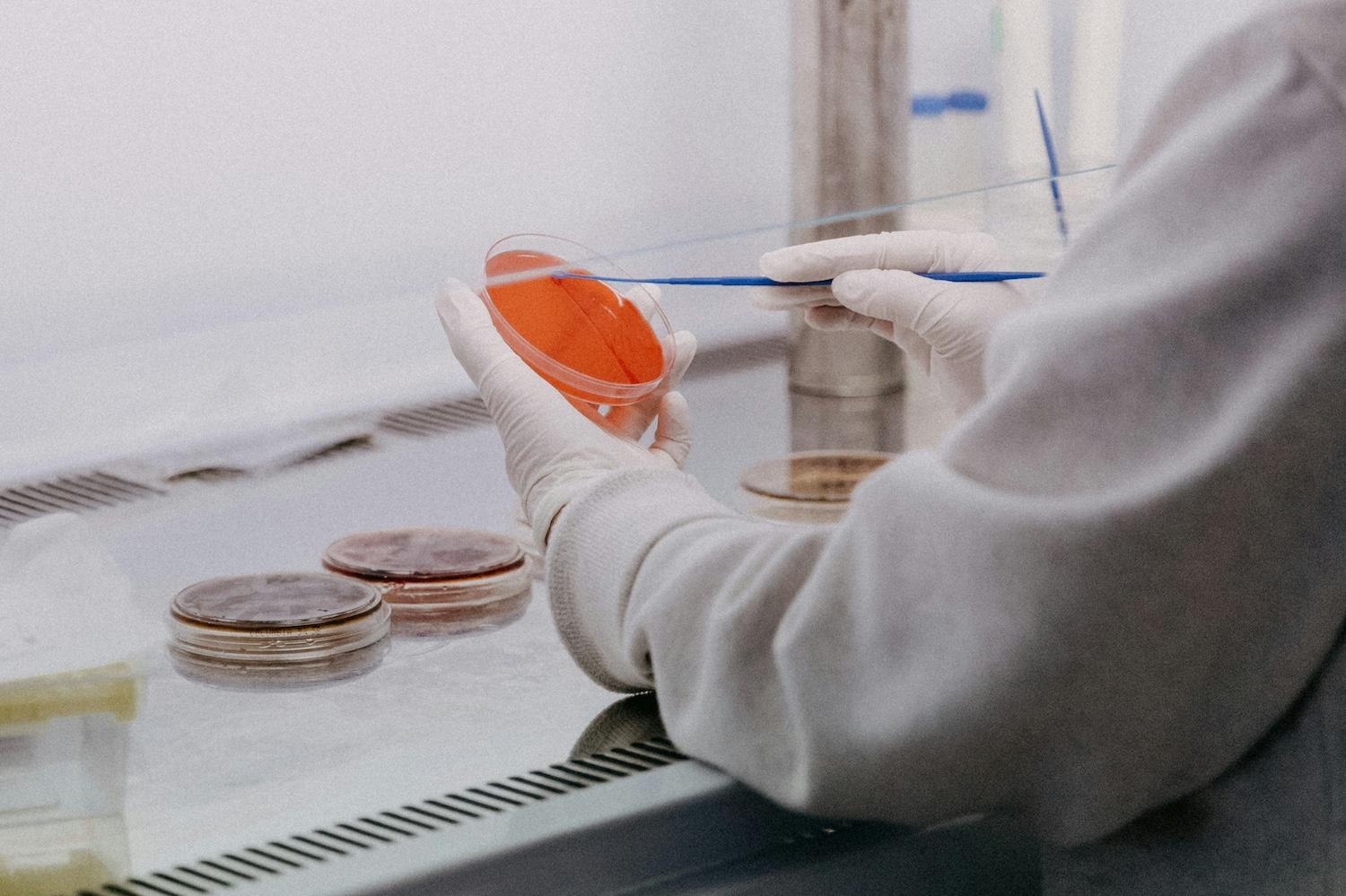
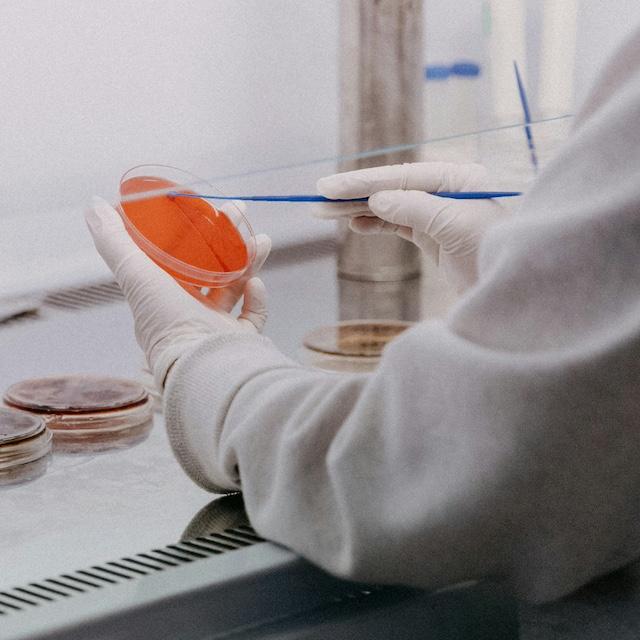
(Image: Trnava University/Unsplash)
Microorganisms in shower heads, dishwashers, washing machines, microwave ovens, toilet tanks and other seemingly ordinary spaces within our homes could soon advance technology to combat climate change.
Seed Health, in collaboration with The Two Frontiers Project and the global citizen science platform CitSci, just launched a community science initiative inviting citizen scientists throughout the United States to collect microbes from home environments that mimic the extreme conditions found in nature.
“Microbes have been evolving on Earth for billions of years, and they’ve learned to thrive in diverse environments, many of which humans couldn’t dream of surviving in,” Braden Tierney, Two Frontiers Project executive director, told TriplePundit in an email. “Those we’re discovering in extreme environments have a wide range of potential biotech applications, which are already being explored in various fields today.”
Microbes have survival mechanisms that allow them to flourish in some of the planet’s most extreme environments — from volcanic vents deep in the ocean to the icy plains of Antarctica, Tierney said. They’ve adapted to survive in everyday environments like freezers, water heaters and other spaces with harsh conditions.
“While everyday spaces may seem ordinary, they mirror the extreme conditions our planet may face in the future,” Tierney said, referring to rising temperatures, increased radiation, and heightened acidification of oceans and soils. “And their microbes could be key to unlocking future climate solutions.”
An enzyme discovered in Yellowstone National Park’s hot springs, for example, enables polymerase chain reaction (PCR) testing to detect COVID-19. The test typically involves having a blood sample or nasal swab sample sent to a lab for diagnosis.
“This enzyme has evolved to survive extreme heat and can withstand the high temperatures used in PCR testing, something enzymes from other organisms can’t do,” Tierney said. “Because this enzyme remains stable and retains its structure through repeated heating cycles, labs can run tests much faster and more efficiently.”
Organisms that live in extreme environments often have biotech-relevant abilities like metabolizing — consuming something, processing it, and using it for energy like humans do with food — carbon dioxide and contamination, Tierney said.
“A golden rule for microbes is that if you want to find a bacteria that can eat a certain compound, such as pollutants or carbon dioxide in the ocean, you can look to an extreme environment where said compound is plentiful,” Tierney said. The “nature of extreme environments means they are chock-full of interesting metabolisms.”
In 2022, a Two Frontiers Project expedition funded by SeedLabs to underwater volcanic carbon dioxide vents off the coast of Sicily discovered a novel cyanobacterium that is exceptionally efficient at consuming carbon dioxide. It may outperform leading carbon-capture organisms.
“This discovery exemplifies the untapped potential of microbes and highlights the importance of exploring new and extreme environments to unlock transformative climate solutions,” Tierney said.
The new project, called The Extremophile Campaign: In Your Home, launched in the U.S. in October. Individuals interested in participating can share their observations on the CitSci site. Once participants submit their observations, Two Frontiers Project scientists will review the contributions and select 100 unique environments for sampling, Tierney said. Selected participants will receive specialized kits to collect and send in their microbial samples. The process will occur on a rolling basis as submissions come in.
“In terms of data we hope to receive, microbiological life often has macro-scale indicators that can be identified with multiple of the five senses,” Tierney said. “Even though we can’t make out single cells with the naked eye, unusual colors, smells, textures, and other data we’re looking for can help us tell what kinds of physiologies are present in a given area.”
The campaign’s success hinges on the collective effort of citizen scientists, he said.
“In extreme environments, we’re often focused on ensuring that we have the materials we need and that the team is safe. We’re not worried about safety in people’s homes, but what we do need is community scientists to get excited about the potential of microbial discovery under their noses and put some time in to help gather data,” Tierney said. “Where a single expedition is hard sometimes because of where you’re going, community science simply will not happen without the collective effort of many people.”
The campaign aims to bring science into the culture by shifting how people see everyday environments and inspiring them to actively participate, Ara Katz, co-founder and co-CEO of Seed Health, told 3p in an email.
“We're reframing the environments we live in and interact with every day — our homes, our appliances — as sources of discovery and potential solutions for the future of our planet,” Katz said. “There may be microbes right under our noses — in our freezers, microwaves, dishwashers — that could help solve some of the greatest challenges facing the health of our planet and ourselves.”
New Reforestation Tool Makes Data Collection Easier to Boost Project Success
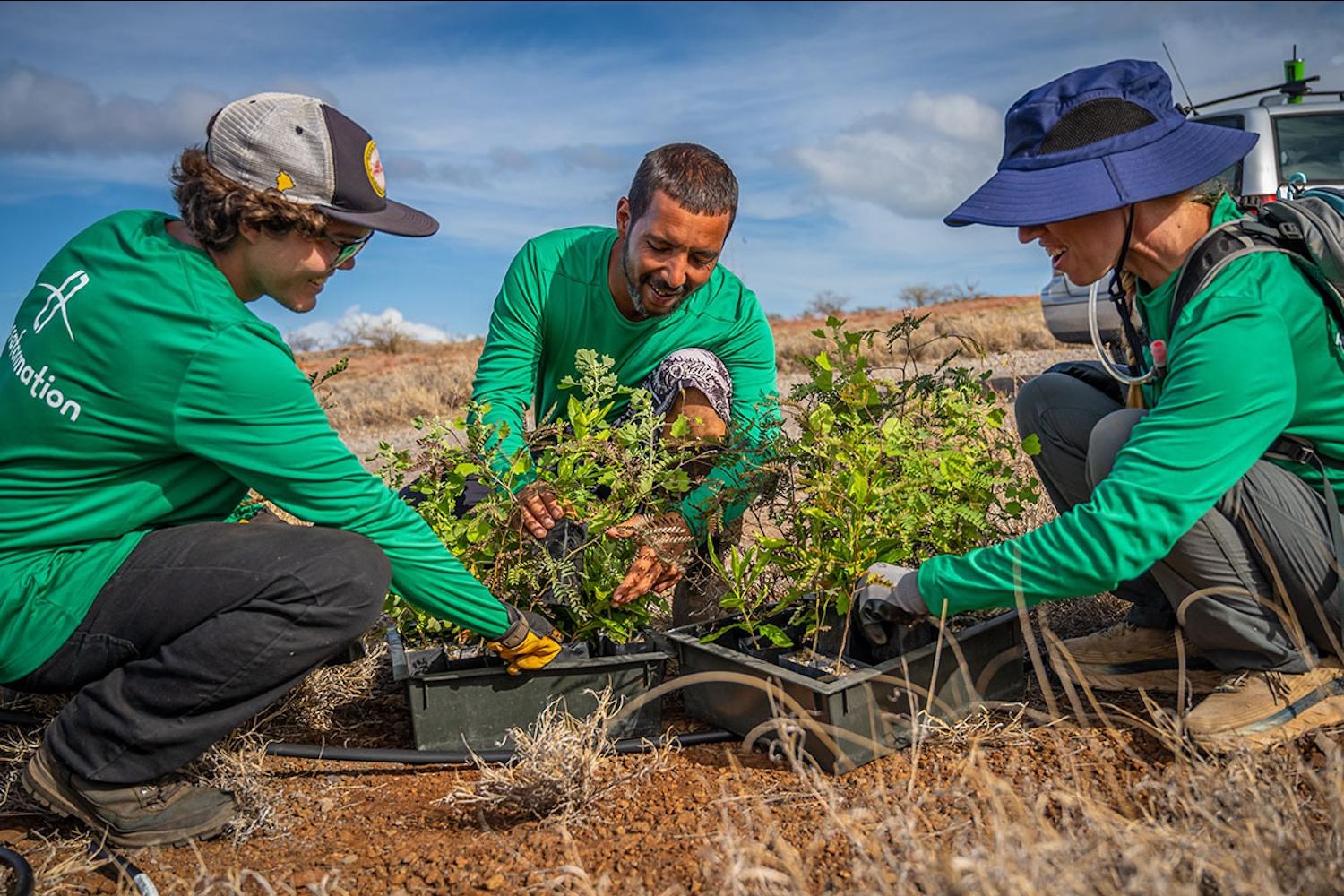
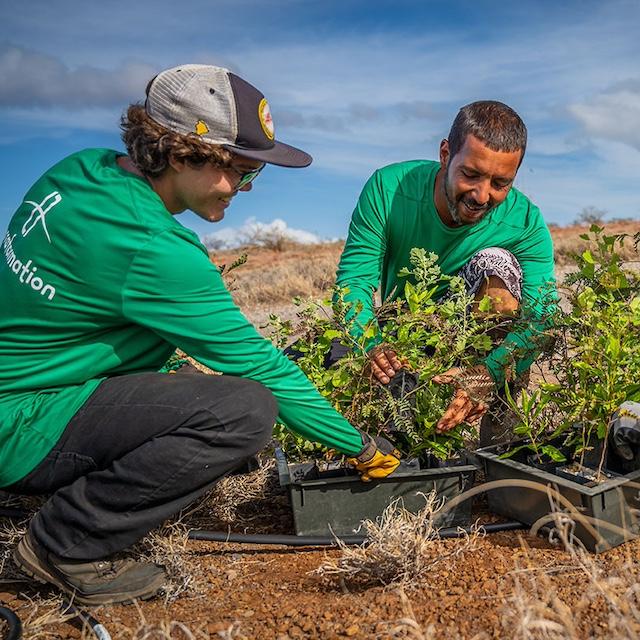
A Terraformation team working on a reforestation project. (Image courtesy of Terraformation.)
While developing seed banks to facilitate reforestation, the Terraformation product team discovered a huge data collection gap in projects seeking to recover forested areas. According to the foresters and community groups the team collaborated with, no software could facilitate tracking the huge amount of data generated by reforestation projects.
Data for tree monitoring — when it was planted, how big it is, how fast it’s growing — was tracked in intensely laborious ways with literal pen and paper or Excel spreadsheets. Terraformation decided to bridge that gap and developed a tool that would help foresters gather information to make reforestation projects more effective: Terraware.
Reforestation isn’t a field that interests most tech companies, and foresters are not a common target audience for the development of apps, said Nicole Wilke, head of product at Terraformation.
“If you can't track reforestation efforts, which are really big and really complex, it's going to be hard to know what's being successful,” Wilke told TriplePundit. “It's going to be hard to practice what we call adaptive management, which is essentially learning from your mistakes, and course-correcting as you go through one of these projects.”
The lack of forestry project management and tracking mechanisms is one of the reasons why there is very little data about forestry on the ground. This makes successful reforestation projects difficult to replicate since there’s no hard data on why a project might have succeeded.
Conversely, when a tree dies or doesn’t grow at an expected rate, lack of data makes diagnosing what went wrong difficult — if not almost impossible — because of all the variables that go into foresting that aren’t being regularly monitored.
“We surveyed hundreds of foresters around the globe, everywhere, on every continent and asked what their biggest challenges were in being able to do that effectively,” Wilke said. “It sounds simple, but 70 percent of them said that one of their biggest needs was a way to do that without it being wildly labor intensive.”
The tracking offered by Terraware starts at the beginning of a tree’s life, from when the seed is collected from the mother tree and what information is already known about it. How long has this seed been in the seed bank? Where did it come from, and what do we know about it? What kind of processing has happened to it?
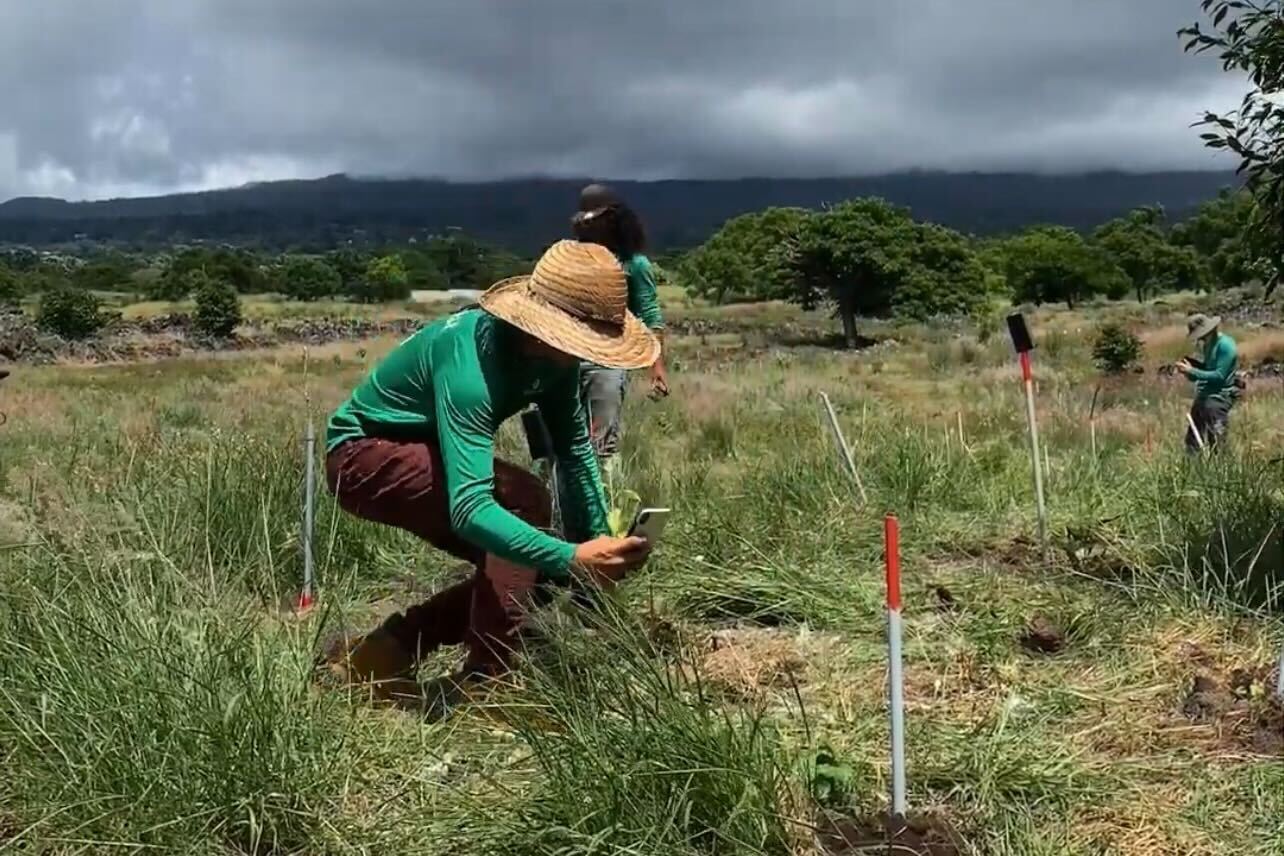
Once seeds are sent to a nursery, Terraware can be used to track the germination rate of that lot of seeds, which informs future seed use. “We can know that a tree is working out and say, ‘Let’s go get more seeds,’” Wilke said.
This kind of forestry tracking can also prevent the failure of reforestation projects because of things like pests or fungi, which are famously difficult to predict until it’s too late.
“If you're tracking mortality in your nursery regularly, and you have a system that can detect a small spike, maybe you can detect that early and take a closer look and figure out what's going on,” Wilke said. This kind of monitoring can inform future planting techniques and locations, depending on what the data says.
While reforestation has historically been trackable through satellite images, that method does not allow for on-the-ground monitoring of young trees, Wilke said. The inability of satellites to capture trees from the beginning of their lives up to five years of age is another issue Terraware is well-equipped to solve.
“If that tree's going to die, it's probably going to be in the first three to five years, when it's prone to be eaten by animals or just dying generally since it's vulnerable,” Wilke said.
The current gap in data collection also results in a lack of data sharing between foresters and reforestation projects across the world, making collaboration between key players in the space difficult. With Terraware, Wilke hopes sharing information about what works and what doesn’t will be easier — which is why the software is open-source and free to use for anyone who needs it.
“It's just a tool that we want to put in your hands,” Wilke said. “And that's how we think that it can help in the fight against climate change.”
For Wilke, Terraware also has the potential to make reforestation projects easier and less risky for investors.
“My hope is if we get some people using this and we get so much data on what's working and what's not, we can help guide reforestation projects using some of that evidence,” Wilke said. “By using some of that data, we can drive the cost of these expensive [reforestation] projects down because there will be less risk. We know what works and there’s less experimentation needed.”
The new app, which is informed by a number of global surveys with foresters and land protectors, was rolled out in Spanish first, Wilke said. The next horizon is to translate the app to French.
The collective building of Terraware is in the spirit of collaboration that is necessary for combating climate change, Wilke said.
“We do not view these projects as our projects,” she said. “We're developing them in partnership with these local communities. We only work with partners that are either led by these communities or organizations that have really, really deep ties to them. It's a dialogue where we're learning from them as a part of what they're sharing.”
What News Audiences Really Want


(Image: Peter Lawrence/Unsplash)
This story about what audiences need from the news is part of The Solutions Effect, a monthly newsletter covering the best of solutions journalism in the sustainability and social impact space. If you aren't already getting this newsletter, you can sign up here.
Most people feel the news industry helps them stay up to date with what’s going on, but the steady stream of stories is also relentless. A growing group of news consumers (39 percent) feel “worn out” by the sheer amount of news. Many say stories about wars, disasters, and politics are squeezing out other topics.
While the media is doing a good job of addressing the two needs most cited by audiences — updating and educating them — it’s lagging on two other things the majority of people find important: providing different perspectives on issues and offering more hope and optimism.
At least that’s the consensus of the 95,000 people from 47 countries surveyed for this year’s Digital News Report from the Reuters Institute for the Study of Journalism at Oxford University. The report is the biggest ongoing study of news consumption in the world. It breaks down digital news audiences' consumption habits and behaviors each year. And for over a decade, Nic Newman, lead author and senior research associate at the Reuters Institute, has made sense of it all.
This year’s report devoted a section to the user needs model, a concept more news organizations are turning to in the face of declining readership, loss of trust and a flooded news market.
“Academics and social scientists have talked about user needs for quite a long time in different ways,” Newman said. “People, in traditional news consumption, used to quite often not read the news, flick over it, and go to the sports or what was happening in their local community … In recent years, because of the struggle of engaging, various user needs models have been popularized.”
Originally coined by the BBC and since evolved by many other organizations and journalists, the model focuses on structuring content in a way that satisfies the basic things people want from the news and recognizing that those wants can be more than just providing pure facts without subjectivity or nuance, which was once considered the gold standard of journalism.
“What [the BBC] broadly found when they looked at the data was that people were not paying as much attention to the updating function but were paying more attention if you [entertained] people or inspired people, particularly around difficult stories like climate change,” Newman said. “The data tells you that, if you take the doomsday scenario approach, people just kind of turn away. So publishers are really looking to use this model to find more uplifting or constructive ways of telling stories that engage people.”
The report found that people want stories with diverse perspectives, stories they haven’t heard of before and stories that give them hope, Newman said. But they aren’t finding enough of them.
“If you just read newspapers, you really would think the world was without any hope. It’s this constant bombardment of negative stuff, and it's not actually like that. It's not a true reflection of what's going on in the world,” Newman said. “There's a lot of really interesting stuff going on, a lot of progress in loads of areas. And that tends to get squeezed out.”
While coverage of extreme weather events and missed climate targets informs, stories of people who devote their lives to making progress can inspire.
“I think that's really critical, to cover these huge stories that don't necessarily have a top to them, that don't always have that immediate hook, and bring them to life and make them relevant,” Newman said. “But in a rounded, 360-degree way. That is what audiences want. They don't want to just have the difficult stuff, but they don't want to not have difficult stuff. They want to have a better balance.”
Readers also don’t want the news to be less rigorous or downplayed, a common misconception of some approaches newsrooms take to meet user needs, like solutions journalism and constructive journalism, Newman said. Also a solutions-focused approach, constructive journalism emphasizes delving into the nuance of a topic and promoting democratic conversation to leave audiences feeling hopeful and motivated. It’s particularly popular in Europe.
These solutions-oriented approaches can address the areas where audiences feel newsrooms are lacking. Both solutions and constructive journalism shift the narrative from emphasizing the negatives to emphasizing action and hope. In that pursuit, journalists often cover unique stories that bring new perspectives forward, because that’s prioritized in the practice and because it’s simply not the norm to report that way.
Only about 35 percent of those who avoid the news are interested in the latest updates on the big daily stories, according to last year’s Digital News Report. Yet 55 percent are interested in positive stories, and 46 percent are interested in stories about solutions.
But it remains to be seen whether these new approaches will influence industry-wide change.
“A lot of great solutions journalism is just looking at difficult stories in a different way,” Newman said. “Whether that actually moves the dial and sufficiently changes the vast majority of journalism — which continues to be negative because negative stuff attracts your attention — or is it just a drop in the ocean? That's what we're trying to work out.”
Nevertheless, newsrooms are taking these ideas seriously, Newman said. In a time of decreasing trust in the media and ever-increasing options for where to find information, they recognize it’s important to put effort into engaging people and building trust. Over the past few years, concepts like user needs and solutions-focused coverage moved away from the fringe and toward the heart of the conversation.
To me, this is all about reconsidering what we think of as “good” journalism. That doesn’t mean tossing out everything and starting over, but why not evolve parts of the traditional news model to make it more relevant to what today’s audiences need? Can it still be the gold standard if swaths of people actively avoid it? We write for them, after all.
“Good journalism is lots of different things, but it's absolutely about the fundamentals,” Newman said. “Many of those things shouldn't change and haven't changed. It's about holding rich and powerful people to account. It's about casting light in areas where otherwise there would be darkness. It's also about taking a balanced view and putting together a package of things that means that people pay attention, that they have a range of things to talk about. It's partly about how we curate what's going on, and what's important in the world.”
All the talk about declining interest in the news and the need to rethink the norms embedded in the foundation of journalism can be daunting and disheartening. But there’s reason for hope in this story, too.
“The way I look at it is, it has never been more interesting or more exciting. There are so many possibilities now to tell stories in different ways: more cheaply, more effectively, to engage people, to connect with people,” Newman said. “These to me, are all opportunities to make journalism better. Obviously, there are challenges around funding, sustainability, engagement. But overall, I'm optimistic. People always need news.”
I couldn’t agree more.
Building Climate and Financial Resilience in Cities: A Dual Imperative


Sustainable Capital Advisors supported coalition members for Pennsylvania’s application for the national Solar for All competition funded by the Greenhouse Gas Reduction Fund which secured $156 million to expand equitable green energy development across the state. (Image: ActionVance/Unsplash)
Cities worldwide are grappling with the profound challenges posed by climate change. Rising sea levels, extreme weather events, wildfires, and drought are not only threatening public health but also damaging infrastructure, stranding assets and exacerbating social inequities. One critical, often overlooked aspect is how climate change is challenging the financial resilience and stability of municipalities.
Climate change is straining public budgets unprepared for the impacts of climate change. For example, New York City faces an estimated $10 billion in potential losses from sea-level rise and flooding over the next decade due to recovery costs, business interruptions and property devaluations. And the 2018 Camp Fire in California resulted in over $16.5 billion in damages, significantly impacting local governments.
Moreover, the financial impact of extreme weather events driven by climate change is set to increase dramatically. Between 2011 and 2020, global losses from such events totaled approximately $2.5 trillion, marking a nearly 50 percent increase from the previous decade.
Further, the municipal bond market is increasingly recognizing the importance of climate-related disclosures. S&P Global expects issuance of green, social, sustainability, and sustainability-linked bonds to approach $1 trillion in 2024. Credit rating agencies like Moody’s are now assessing debt issuer’s credit exposure to environmental risks.
Speaking at the 2023 National Association of Bond Lawyers' conference, David Sanchez, the director of the United States Securities and Exchange Commission Office of Municipal Securities, highlighted the need for municipal issuers to disclose climate-related risks to investors.
“When there is a weather event and damage to a city, people are saying, 'What did the issuer say before?’" Sanchez said. "There’s very public information about flood risks, sea level rising that affect specific areas ... you can’t stick your head in the sand.”
In response to climate change, cities are developing proactive plans to combat climate risks, as seen through the proliferation of municipal-level Climate Action Plans and international initiatives like the United Nation’s Race to Resilience and Race to Zero. However, there is a significant gap between planning and execution. Securing the necessary capital for implementation remains a persistent challenge. In 2023 alone, U.S. cities reported a need for over $51 billion to support climate-related projects.
Climate resilience and financial resilience are inextricably linked. Effective climate strategies protect communities from climate change impacts and safeguard their economic health. By proactively investing in climate resilience, cities can reduce disaster recovery costs, lower insurance premiums and attract long-term investments. This dual focus ensures that cities are better equipped to handle the economic shocks of climate change to continue providing essential services.
How cities are grappling with the dual challenge
Evidence suggests that climate projects are good investments. Every $1 invested in climate adaptation can save up to $13 through avoided future expenditures or increased cost savings. Energy efficiency and renewable energy projects can lower operating costs and lock in competitive energy prices. Investment in climate resilience can increase investor confidence, lowering municipal bond financing costs. Cities at the forefront of climate action are highlighting this financial bonus when pursuing sustainable infrastructure projects.
Take Atlanta, for example. The city set ambitious climate goals including achieving 100 percent clean energy use by 2030. Chandra Farley, chief sustainability officer for Atlanta, knows that strategic fiscal planning will be imperative to achieve their goals while mitigating future financial risks.
“As residents rates go up, the city’s rates go up," Farley said during an Atlanta City Council Utilities Committee meeting. "We saw that in the budget presentation, an about 4 to 5 percent increase on our utility [bills]. Investing in energy efficiency with shorter paybacks now for the city [and] procuring more renewable energy continues to be critically important.”
To meet these targets, the Atlanta's Mayor's Office of Sustainability and Resilience collaborates closely with the Department of Finance to explore innovative financing models. The partnership includes Sustainable Capital Advisors (SCA) involvement in developing the city's federal sustainable infrastructure funding and financing strategy. This includes conducting a landscape analysis of funding opportunities, and leveraging tax incentives to realize cost savings from sustainable investments. By adopting a comprehensive approach, Atlanta is positioning itself to advance critical projects in a resource-constrained environment, benefiting the city’s financial resilience.
Historic levels of grant funding present unprecedented opportunities for cities to secure the capital needed for essential climate action projects without overburdening their budgets through programs like the Greenhouse Gas Reduction Fund, Infrastructure Investment and Jobs Act and Inflation Reduction Act.
A notable example of leveraging this funding is SCA’s ongoing partnership with the Philadelphia Green Capital Corp., the green bank affiliate of the Philadelphia Energy Authority. SCA recently supported the organizations as a coalition member for Pennsylvania’s state application for the Solar for All competition, successfully securing $156 million to expand equitable green energy development across Pennsylvania.
Emily Schapira, president and CEO of the Philadelphia Energy Authority, recognizes the importance of tapping into this historic moment.
“[The Philadelphia Energy Authority] is experiencing rapid participation growth across our clean energy programs," Schapira said in the organization's annual progress report. "With limited resources, we are truly leveraging every available dollar — including once-in-a-generation federal funding and a growing wave of private investment. Our reliance on city funding represents only a relatively small share of our programs’ overall budget, delivering $132 in benefits for every $1 invested by the city."
By bringing together multiple stakeholders, exploring grants, innovative financing and public-private partnerships, the authority is able to stretch financial resources to achieve goals and advance regional resilience.
The climate financial risk and resiliency toolkit
Examples like these illustrate a path forward. Cities can achieve both climate and financial resilience by following a structured approach. SCA developed a three-step framework based on the analysis of over 300 municipal climate action plans, case study research of best practices, and over a decade of strategic consulting and financial advisory services. It's designed to support municipalities in proactively managing climate-related financial risks and seizing opportunities for sustainable growth during this historic moment in climate funding.
1. Develop a robust understanding of climate-related financial risks
The late Peter Drucker, a leader in management consulting, famously said, “What gets measured gets managed.” Climate-related financial risks are no exception. In a landmark 2017 study, the Government Accountability Office recommended the federal government to use available information on the potential economic impacts of climate change to identify significant risks and craft appropriate responses, including guiding federal investments to enhance resilience against future disasters. State and local authorities should follow this recommendation to identify, prioritize and address significant risks.
The first step for cities is to comprehensively assess the financial impacts of climate change within their remit. This involves evaluating potential physical and transition-related risks associated with various climate scenarios, and their impact on economic indicators, potential expenditures and revenue loss.
For example, flood-prone communities could examine potential property tax revenue loss due to the devaluation of chronically flooded homes. Cities susceptible to climate-driven natural disasters should analyze historical recovery costs and project future expenditures. Municipalities dependent on fossil fuel industries could evaluate potential employment changes due to the clean energy transition.
Importantly, cities must consider how these risks may exacerbate existing inequities, particularly for low-income and marginalized populations. Each municipality must define the most critical factors to assess based on their unique physical, social and economic context.
By quantifying these risks, cities can prioritize investments and interventions that mitigate potential financial losses and enhance overall community resilience. This process builds a compelling business case for investing in climate resilience, aligns financial and sustainability teams towards common objectives, demonstrates proactive risk management to future investors, and establishes a baseline to evaluate progress.
2. Leverage diverse funding sources for urgently needed priority projects
With a nuanced understanding of climate-related financial risks, cities should develop a strategic roadmap to efficiently deploy capital towards priority projects that enhance climate and financial resilience. This roadmap should integrate diverse funding sources — including federal grants, budget allocations, public-private partnerships and municipal bond financing — connecting them directly to specific climate-related projects.
Initiatives could include upgrading infrastructure for resilience against extreme weather events, implementing sustainable energy solutions, enhancing water management systems, or constructing climate-resilient affordable housing.
Identifying clear funding pathways clarifies the requirements to secure capital. By determining which projects are grant-eligible, cities can proactively assemble collaborative teams and reference successful proposals from past winners, allowing them to seize funding opportunities swiftly.
Projects eligible for novel financial structures — such as direct-pay rebates, Power Purchase Agreements or energy efficiency upgrades — can be prioritized and savings earmarked for reinvestment. Larger projects requiring bond financing can be flagged for additional support from financial teams. By mapping projects to potential funding sources early on, municipalities can create project specific strategies that ease barriers to implementation.
3. Align long-term investments with climate goals
Finally, cities must integrate climate considerations into their long-term financial planning processes. This entails collaboration across municipal departments, guided by budgeting offices, to ensure that financial resources are efficiently allocated towards resilience-building initiatives.
Establishing budget guidelines that prioritize investments in resilience, emission reduction, and climate-smart policies supports long-term fiscal health. By embedding climate resilience objectives into budgetary frameworks, cities can enhance their capacity to adapt to climate impacts as they evolve while promoting sustainable growth and development.
Implementation support
Climate resilience is financial resilience. By implementing this strategic framework, cities can proactively manage climate-related financial risks, leverage diverse funding sources for priority projects, and align long-term investments with climate goals. Embracing these principles positions cities to thrive amidst an ever-evolving regulatory landscape and growing climate challenges, while contributing to a sustainable future.
How U.S. Business Leaders Are Making Their Voices Heard Ahead of the Election


(Image: tiero/Adobe Stock)
With the United States election mere days away, we spoke with advocates and business leaders to learn more about what they've done to prepare and what's next for them. From endorsing a candidate and taking a public stance on key issues to finding non-partisan ways to promote free and fair elections, it's not too late to be inspired by how leaders are finding their voice in this historic moment.
Arizona business leaders take a stand for immigrant communities
Along with a heated presidential contest and key legislative elections, voters in 41 U.S. states will decide on more than 150 ballot measures, which allow the electorate to directly determine if proposed laws or policies will go forward. Many of these ballot measures, also known as referendums, are major flashpoints for debate in communities across the country.
In Arizona, where candidates up and down the ticket have made immigration reform a central topic of discussion, Proposition 314 puts the issue directly to voters. If passed, the proposition would make it a state crime for non-citizens to enter Arizona from another country — outside of using official ports of entry — and allow state and local police to arrest undocumented people for entering illegally.
Local First Arizona, a nonprofit coalition of privately-owned businesses, is among the groups opposing the measure. Founder and CEO Kimber Lanning, who also owns a music store in Phoenix, debated Republican state Sen. John Kavanagh on the proposition this summer on Arizona's PBS affiliate station.
"We step into conversations about immigration, and we have taken an active stance," Lanning told TriplePundit. "In this particular bill, it's an unfunded mandate. So, not only do we talk about the fact that local law enforcement does not have any budget to cover it, we also bring local law enforcement into the conversation."
The Republican-backed proposition appears on the ballot as GOP presidential candidate Donald Trump has pledged to use wartime powers to deport millions of undocumented people if he is elected. Along with engaging local law enforcement around the issue, Local First Arizona looks to raise awareness among business leaders about the economic impacts of criminalizing immigrant communities.
"If we were to undergo the largest mass deportation in the history of the country ... it would be the most devastating to not just the U.S. economy, but specifically to the Arizona economy," Lanning said. "If we were to do something like that, the economy would tank — and that directly relates to businesses of all kinds."
Immigrants make up over 16 percent of Arizona’s labor force and account for more than a fifth of the state’s entrepreneurs, according to the American Immigration Council. The last time Arizona enacted strict anti-immigrant legislation, the state's GPD declined by 2 percent a year from 2008 to 2015, according to a Moody’s Analytics study for The Wall Street Journal.
Leveraging credible research like this is core to how Local First Arizona drives the conversation around immigration and other key issues. "The way we approach it, whether it be with other business owners or elected officials, is to really just take a common-sense approach," she said. "We cite facts and statistics. If somebody comes at us and talks about an 'invasion at the border,' we bring it back down to what's actually happening at the border, and we have statistics to back that up. It's about changing the picture so that people can understand what the actual facts are and keeping them away from the drama-infused exaggeration that plays on people's fears."
Business leaders across the country are among the leading voices opposing state-based immigration restrictions and the suggestion of mass deportations at the federal level. New American Economy, a research and advocacy organization whose board includes business leaders from both sides of the political aisle — including billionaires Michael Bloomberg and Rupert Murdoch — convened public- and private-sector coalitions to oppose strict immigration crackdowns ahead of the election. And lobbying by business coalitions such as Local First Arizona is a major reason states have failed to enact more screens on job-seekers based on immigration status.
"[For people] to go out and vote against something, they have to understand the facts," Lanning said. "They have to be able to hear from both sides — that's important. Anything we do at Local First Arizona, we do not try to silence the other side. We simply bring facts forward, allow people to present their best case and allow viewers to make their own decisions."
As people look to their employers for answers, business leaders across the U.S. are challenged to plan for what's ahead
People are more likely to trust their own employers than any other institution, including government, NGOs and the broader business community. Scenario planning allows leaders to understand the policy proposals being put forward in the upcoming election and how they could impact their businesses, employees and other stakeholders. BSR, a membership organization of more than 300 companies, convened monthly Election Roundtables over the course of this year where leaders discussed potential election outcomes and how to respond.
"People will look to companies and employers, no matter the outcome, to help steady the ship. Whether companies are seeking that role or not, they need to be prepared," said Jen Stark, co-director of the Center for Business and Social Justice at BSR. "There's a real need for companies to think about the tangible implications — not just the existential threat, if you will, or the idea of business and democracy — but what this really means across their value chain, to their workers, and to the communities in which they live and work."
BSR members outlined how the outcome of the presidential race in particular could impact issues such as climate policy, access to reproductive and LGBTQ-inclusive healthcare, corporate diversity, equity and inclusion (DEI) policies, and responsible investing. As around two-thirds of U.S. voters say they're worried about political violence on Election Day and in the months after, business groups including BSR and the pro-democracy coalition Leadership Now Project are also working with leaders to plan for what they'll do after Nov. 5.
"Post-election, there is a real risk that it takes time to finalize the results. Results could be contested in the courts. There is a risk of violence," said Daniella Ballou-Aares, founder and CEO of the Leadership Now Project. "We need Americans to know that there might be some time between the election and when we get a final result. But there's also a need for a united front from civil society, from business, and from elected officials that violence and threats are unacceptable in that process between election and inauguration — and that they will stand up against those if they happen."
Business leaders associated with the Leadership Now Project issued a statement earlier this year calling on candidates for federal office to commit to accepting the election results, with signatories including LinkedIn co-founder Reid Hoffman, SurveyMonkey CEO Eric Johnson and former NFL Commissioner Paul Tagliabue. "We are working on making sure that leaders come out with a proactive stand before the election saying we expect the election to be respected by both parties," Ballou-Aares said. "Unfortunately the former president [Donald Trump] has not agreed to that pledge, but we're going to keep pushing."
State-based business coalitions, including groups in key swing states like Arizona and Wisconsin, also said they will not support presidential or congressional candidates who refuse to commit to certifying the election. "As a bipartisan group of business leaders, we try to communicate to the larger business community in Milwaukee how important democracy and the rule of law are for an environment that has the predictability that any business needs to thrive," Tom Florsheim, Jr., chairman and CEO of the Milwaukee-based footwear company Weyco Group and member of Wisconsin Business Leaders For Democracy, told TriplePundit in an email.
Although it is a bipartisan group, the Leadership Now Project moved to endorse Democratic presidential candidate Kamala Harris last month, citing Trump's failure to recognize the results of the 2020 election as a key reason why. "Our entire system depends on trust in our electoral system, peaceful transfer of power and willingness to respect the results of elections," Ballou-Aares said. "We're seeing what happens when that doesn't work in Venezuela right now. That is an extreme example, but the undermining of elections is extremely dangerous as a precedent."
It's not too late for business leaders to act ahead of Election Day
Even with mere days left until the election, it's not too late for business leaders to get involved, and the leaders we spoke with offered plenty of ideas on where to start.
Share critical voting information. It may sound basic, but reminding people about the date of Election Day and how to find their local polling place can significantly impact voter participation. Around 100,000 polling places have closed since the 2022 midterms, so your employees and customers could be understandably confused about where they're supposed to vote. Whether it's an email to employees, a sign on a storefront or a post to social media, using your platform to share critical election information gives your stakeholders the tools they need to make their voices heard. "Make sure people are informed about when they can vote, where they can vote and why it's important to vote," Ballou-Aares said.
Make sure your employees have a voting plan. Along with confusion about when and where to vote, not having transportation to the polls remains a key barrier to voter participation. Ask your employees if they have a plan to cast their ballots and if they need support. "I know of several businesses that are asking if their employees need transportation," said Lanning of Local First Arizona. Beyond the business, calling or texting friends and family to help them make a voting plan — what journalist Michael Thomas called "relational organizing" in his climate-focused Distilled newsletter — is a simple but effective way to get involved.
Give employees time off to vote and volunteer. "Only a handful of states require employers to provide paid time off to vote," said Stark of BSR. "We certainly encourage employers, even if it's not required in their state, to offer paid time off opportunities." Over recent years, thousands of major companies pledged to give their employees paid time off to cast their ballots as part of business coalitions like the Civic Alliance and Time to Vote. Employers may also consider giving their employees the full day off to volunteer as poll workers or drive people who don't have transportation to their local polling place, Stark said.
Abortion Restrictions Bring New Attention to U.S. Maternal Health Crisis
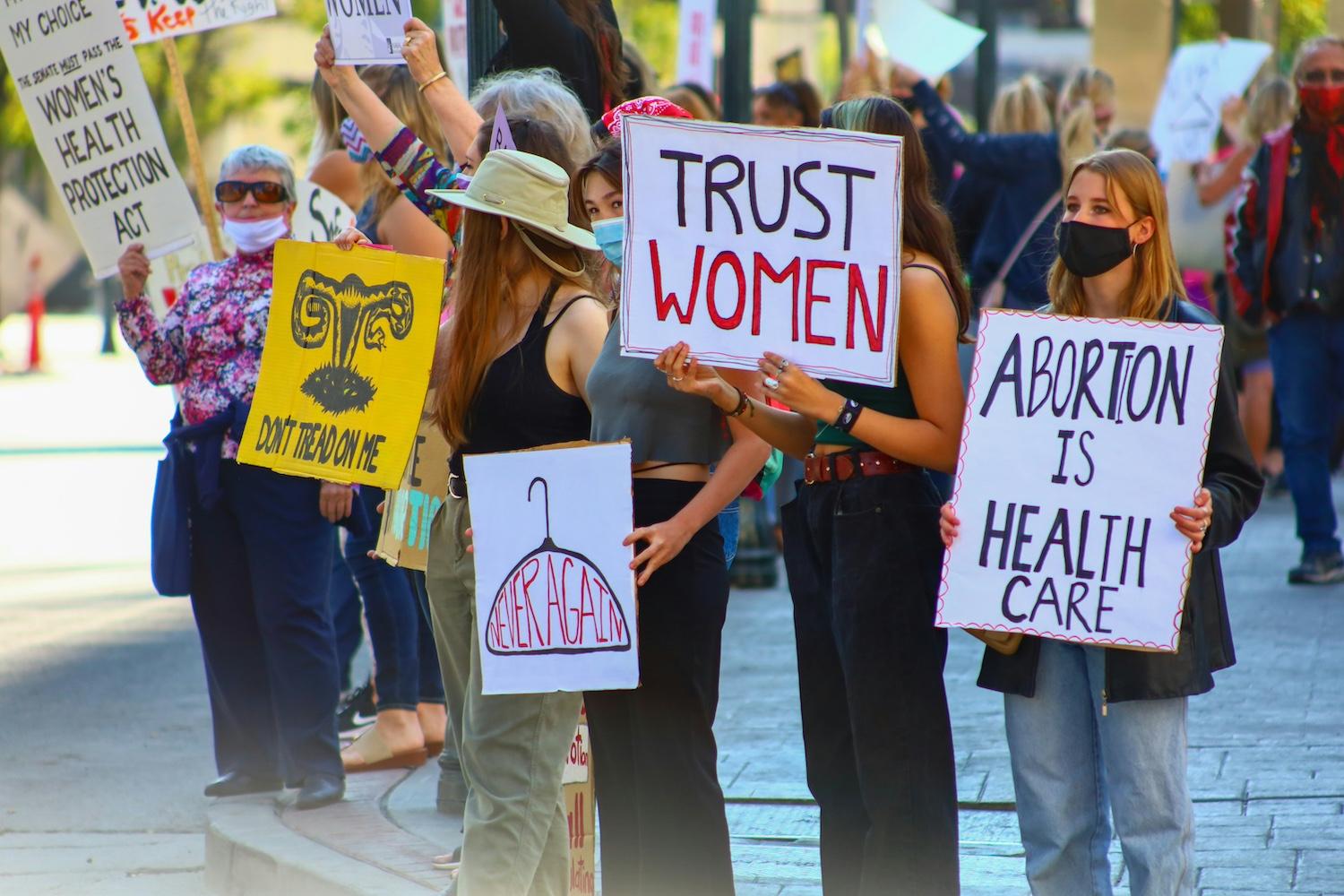

(Image: Manny Becerra/Unsplash)
Maternal mortality is higher in the United States than in most developed countries and has actually increased over the past 20 years. Research shows the 2022 Dobbs v. Jackson Women's Health Organization decision, in which the U.S. Supreme Court removed federal protections for abortion, has made the country's maternal healthcare crisis even worse. Business leaders can take two steps to help resolve it: They can advocate for new federal laws guaranteeing abortion rights, and they can support holistic healthcare policies for women in all stages of maternal care. Or, they can continue not taking women’s lives seriously.
The maternal care crisis predates Dobbs
In terms of mortality outcomes for pregnant people, the U.S. has long earned a notorious reputation among its peer nations.
“The United States continues to have the highest rate of maternal deaths of any high-income nation,” according to a survey by the healthcare advocacy organization Commonwealth Fund. The report emphasized that Black women are by far the most vulnerable group in the U.S.
The survey covered 2022, the latest full year of available statistics and before the full impact of Dobbs occurred. Even without the full impact, the U.S. record on maternal mortality was abysmal. The U.S. recorded 22 maternal deaths for every 100,000 live births in 2022, while half of the other countries surveyed recorded fewer than five, according to the report. The U.S. figure was also up to three times higher than the remaining half.
Almost 66 percent of maternal deaths in the U.S. took place within the six-week period following childbirth, indicating a lethal shortfall in access to postpartum care, according to the report.
Unequal access to maternity care is also a problem
A closely related matter is access to maternity care, another problem predating the Dobbs decision.
“Maternity care deserts are counties where there is no access to birthing hospitals, birth centers offering obstetric care or obstetric providers,” according to a report from the March of Dimes, a nonprofit focused on maternal and infant health.
The report emphasizes that “no access” literally means “not a single birthing facility or obstetric clinician” in the whole county. It identified more than 1,104 U.S. counties as maternal care deserts, covering a collective population of more than 2.3 million women of reproductive age.
“Women living in maternity care deserts and counties with low access to care have poorer health before pregnancy, receive less prenatal care, and experience higher rates of preterm birth,” according to the report.
Texas raises a red flag on abortion rights
With the U.S. maternal care system already held together by bubble gum and baling wire, just one push was needed to send it over the edge. That is exactly what the Dobbs decision did. The Supreme Court empowered conservative state legislators to revive old abortion restrictions and invent new ones.
Texas is often held up as an example of the negative impact of Dobbs on women’s health. Though here, too, maternal care was already in crisis. As of 2022, almost half of Texas counties — 46.5 percent — were maternal care deserts, significantly higher than the national figure of 32.6 percent, according to the March of Dimes report.
In 2021, Texas lawmakers passed new abortion restrictions under Senate Bill 8 (SB8). Some business leaders responded by helping their employees in Texas seek out-of-state care, but the fallout was already in evidence. The maternal death rate in Texas rose by 56 percent from 2019 to 2022, compared to an 11 percent rise nationally, according to the Gender Equity Policy Institute.
Infant mortality also increased far more in Texas compared to other states the year after SB8 was enacted, according to the Johns Hopkins Bloomberg School of Public Health.
Dobbs is making it worse … for everyone
Against this backdrop, the maternal care system in Texas is feeling the full impact of both SB8 and the Dobbs decision. Over and above the lethal consequences for women and their babies in Texas, the medical workforce is also feeling the effects. That should put business leaders on high alert all over the country as Republican policymakers advocate for a national abortion ban.
In August, the leading healthcare consultancy Manatt released a survey of physicians in Texas regarding the aftermath of SB8 and Dobbs. Almost 76 percent said they “cannot practice medicine according to best practices/evidence-based medicine” under the new legislative environment.
While only 2 percent of those surveyed said they moved out of state to continue their practice, a total of 35 percent said they were thinking about moving, in the process of planning to move, or would like to move but had personal reasons for staying. An additional 20 percent reported retiring early, changing their medical field or leaving medicine entirely.
"Take our lives seriously"
With the prospects of a national abortion ban looming overhead, former First Lady Michelle Obama summed up the dire consequences for women in a passionate, widely reported speech last week. Campaigning with Vice President Kamala Harris, Obama exhorted male voters to put aside any anger they may feel regarding national or personal affairs, and cast their ballots in support of women’s health.
“If we don’t get this election right, your wife, your daughter, your mother, we as women will become collateral damage to your rage,” she said. “I am asking y’all from the core of my being to take our lives seriously.”
That exhortation also applies to business leaders. Each of them has only one ballot to cast, but many of them have an outsized voice on politics and the national culture.
As of this writing, the outlook for a Kamala Harris administration in 2025 is improving, along with the prospects for a permanent, universal restoration of abortion rights across the U.S. But if business leaders really want to be known for taking women’s lives seriously, they need to start advocating, loudly and forcefully, for a universal health care system that actually places a priority on protecting women’s lives.